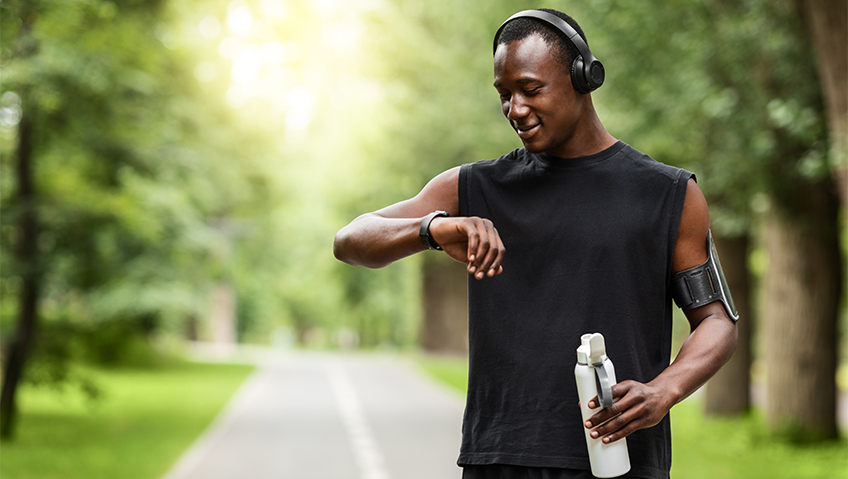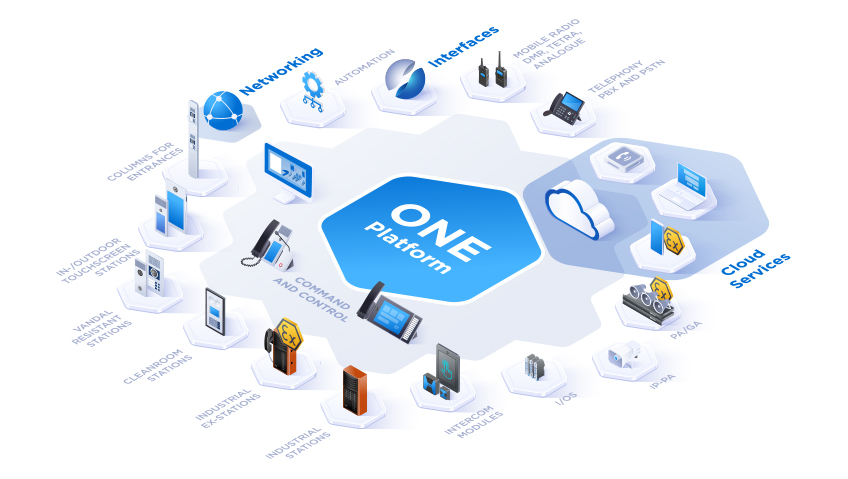While many of us have concerns about our devices collecting information about us, the data collected by the smartphone in your pocket could be used to spot medical and psychological problems before you do.
There is incredible momentum in healthcare when it comes to self-responsibility and the benefits of artificial intelligence, or AI. Mobile and wearable devices like smartphones, rings, and watches can track your body’s most important messages. You can find out about the quality of your sleep, activity and exercise, stress and heart health. You can see what your resting heart rate is, for example, and how you’re recovering from everyday stresses. Or, if your resting heart rate has skyrocketed, you can be prompted to go to the hospital to check for irregular heart rhythm or atrial fibrillation which, left untreated, could lead to stroke and disability.
In this context, smartphones and other devices with biosensors that measure your body’s biological or chemical reactions can provide the vigilance that we need. Healthcare facilities and specialists are already feeling the burden of a growing and aging population here in North America and beyond. Paramedics have expanded their practice so that ambulances have become mobile treatment clinics. Pharmacists can now prescribe more prescription medication and counsel patients. And just as transformative, AI in the hands (and pockets) of people themselves can provide the tools for improved health through better self-monitoring.
“As the elderly population grows globally, the medical industry is changing dramatically due to the need for point-of-care (POC) diagnosis and real-time monitoring of long-term health conditions. Over the past 30 years, data from rare disease registries have helped inform scientific understanding and the development of comprehensive monitoring and treatment guidelines, aiming to improve the quality of life of affected patients,” writes Ion-Alexandru Secara and Dariia Hordiiuk, authors of a study published in May in the Journal of Intelligent Learning Systems and Applications.
“The evolution of healthcare technology from traditional methods to AI-enhanced wearables underscores a significant advancement towards personalized care, necessitating further research and innovation,” the authors note. AI is opening doors for therapies and drug development in personalized or “precision medicine” as it is often called, that can provide customized and effective care for each unique individual.
That said, having a smartphone is much more than a way to connect with family and friends or follow the daily news. Devices like these can capture and analyze data about how you interact with your environment and other people, looking at how active you are, what you’re eating, and how far you’re travelling each day. This kind of basic health information is an important predictor of everything from general wellness and heart conditions to diabetes and mental health concerns like depression and anxiety.
In a recent study of 177 people with major depressive disorder, the MoodCapture smartphone app correctly identified early symptoms with 75 percent accuracy, combining the power of AI with facial-image processing software. UPI spoke to the study researchers in Dartmouth’s Department of Computer Science and Geisel School of Medicine in Hanover, NH in February, learning that the app uses a phone’s front camera to capture facial expressions and surroundings during regular use. Then the images are evaluated for cues linked to depression.
“We undertook this study to address critical gaps in traditional methods of monitoring and detecting depression,” the study’s co-first author, Subigya Nepal, told UPI. “Traditional approaches often involve self-reports and clinical assessments, which can be biased and may not capture the complexity of an individual’s mental state continuously.” More objective and unobtrusive methods could help with early detection and faster intervention for those at risk.
Nepal also talks about the added benefit of making depression detection more accessible for people and less stigmatized because it’s embedded into daily technology use. It doesn’t require user input, doctor supervision, or clinical visits to use. When there is so much concern over existing health inequalities like access to care, simple and effective self-monitoring tools can help to level the playing field.
As Scientific American reports in a January article, Intervention at an Early Age May Hold Off the Onset of Depression, identifying at-risk individuals might stop depression from becoming chronic and disabling:
“The earlier a first episode of depression begins, and the more episodes a person suffers, the more serious and disabling the condition is likely to be throughout life,” says the piece. “People who recover from an initial depression have a 40 to 60 percent chance of a later episode; those with two episodes have a 60 to 70 percent chance of recurrence, and those with three episodes have a 90 percent chance—a vicious cycle that too often ends in chronic illness or disability.”
While the pandemic thrust mental health into the spotlight, the article notes that the risk for teens of falling into this depression cycle has climbed alarmingly since COVID’s shutdown: surveys by the Centers for Disease Control and Prevention found that 42 percent of U.S. high school students report hopelessness or lasting sadness, up from 28 percent a decade before.
Smartphone apps for mental health monitoring could have a significant impact, given that statistics as of October 2023 show that 97 percent of teenage girls in the U.S. had access to a smartphone at home. Teen boys aged 13 to 17 years had a smartphone access rate of 94 percent. In total, 95 percent of U.S. teens had smartphone access at home.
Weaving healthcare into a growing number of everyday products makes health information accessible and easier to grasp—and the relationship between patient and physician stands to evolve.
“Digital devices can help patients take an active part in their own health or disease management,” Bertalan Meskó told Well+Good earlier this year. Meskó is Director of the Medical Futurist Institute which analyzes the role of digital technologies in shaping the future of healthcare. “They can finally become members of their own medical team.”
The Emm menstrual cup, for instance, has a connected app that will tell you about your menstrual flow, and its technology in development will alert you to early signs of diabetes, high cholesterol, and gynecological diseases. The Daye tampon now works to check the vaginal microbiome to detect bacterial infections, potential fertility problems, and indications of entering perimenopause.
Earbuds in the works from EarHealth promise to screen for ear infections, earwax blockage, or ruptured eardrums. Apple has its Health app warnings about dangerous volume levels and is reportedly designing AirPods that will screen for hearing issues.
There is also a smart tattoo coming that changes colors in response to your hydration levels, blood sugar levels, or kidney or liver function. Another tattoo nearing market release lights up with exposure to UV light (skin cancer is the most common cancer in the U.S., and the most preventable cause is overexposure to UV light, according to the Centers for Disease Control and Prevention).
Clothing is another route to mass adoption of the technology. The Prevayle SmartWear shirt or sports bra, launched in 2022, comes with a sensor that can capture almost 1,000 data points per second, including your body temperature and breathing rate. Its electrocardiograms, or ECGs, were validated against the hospital-grade standard for heart rate monitoring.
NADIX Activewear uses mild vibrations from sensors integrated into its leggings to let you know if you are practicing yoga moves accurately, helping improve overall balance, flexibility, and strength. Meanwhile, medical-grade wearables like continuous glucose monitors for people with diabetes automatically estimate blood sugar throughout the day and night (and set off an alarm for dangerous low or high blood glucose levels).
As well, AI neuroscience research at Imperial College London is hoping to add sensors to clothing items that will detect movement patterns that are characteristic of neurological disorders like Duchenne muscular dystrophy, one of the most common and severe forms of hereditary neuromuscular disease. Critical information like this can help doctors catch problems early and stall the progression of debilitating disorders.
The trend in wearable health tech is set to boom. Global smartwatch shipments are going to surge from 37 million units in 2016 to more than 402 million units by 2027, Statista projects. The next chapter in the evolution of wearable health tech will be prioritizing the adoption of medical-grade wearables for medical purposes. As Forbes notes, the use of personal fitness trackers or smartwatches presents distinct challenges of accuracy and reliability, data security, regulatory compliance, and interoperability and integration with healthcare systems and electronic health records that allow for efficient data sharing among healthcare providers for diagnostics and treatment.
AI has tremendous value in healthcare, but we all need to be aware of the benefits and risks of BYOD—Bringing Your Own Data—to your next doctor visit.






